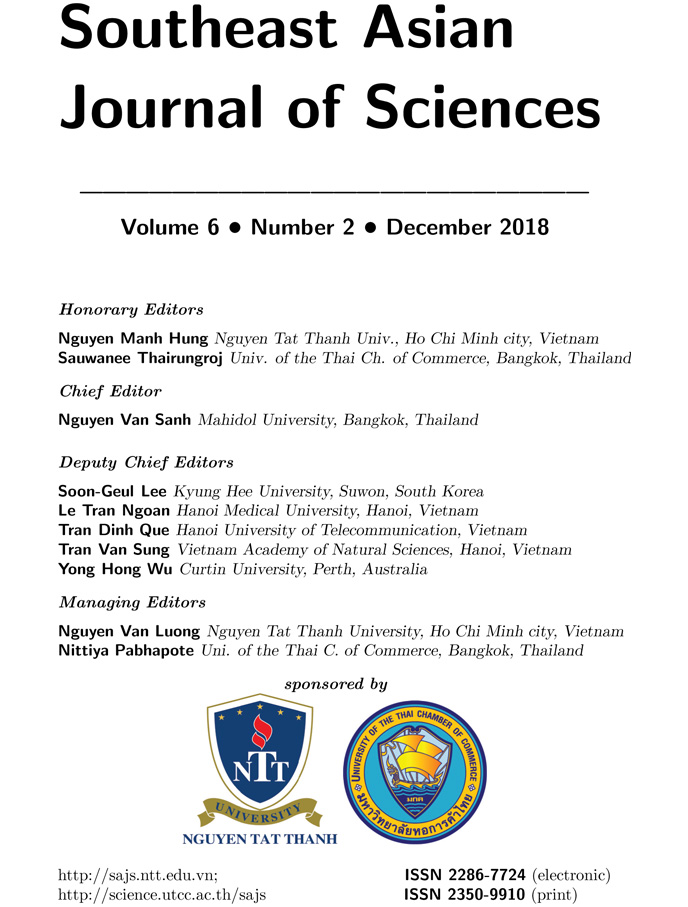EFFECT OF CONTROL MEASURES ON THE TRANSMISSION MODEL OF NIPAH VIRUS DISEASE
Abstract
The objectives of this study were to propose mathematical model of Nipah Virus Disease with effect of control measures on the transmission model Nipah Virus Disease, and to investigate the transmission model of Nipah Virus Disease. The standard modeling method is applied for model analysis. In this study, there were two control measures, the awareness rate to protect disease (u1) and the recovery rate of humans by treatment (u2).
In the proposed model, the human population was divided into three compartments, susceptible human (S), infectious human (I), and recovered human (R). The results showed that there were two equilibrium points; disease free equilibrium and endemic equilibrium point. The qualitative results depended on the basic reproductive number R0.
We obtained the basic reproductive number by using the next generation method. Stabilities of the model are determined by Routh-Hurwitz criteria. If R0 < 1, with u1 = 0.96 and u2 = 0.74, then the disease free equilibrium point is local asymptotically stable, but if R0 > 1 with u1 = 0.50 and u2 = 0.35, then the endemic equilibrium point is local asymptotically stable. The graphical representations are provided to qualitatively support the analytical results. It concluded that if the effective of awareness rate to protect disease (u1) and the recovery rate of humans by treatment (u2) increases, then the spread of this disease is reduced.

